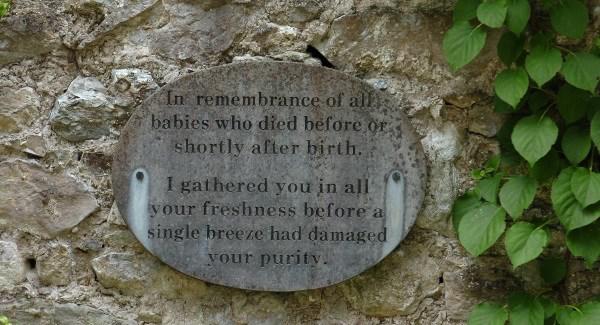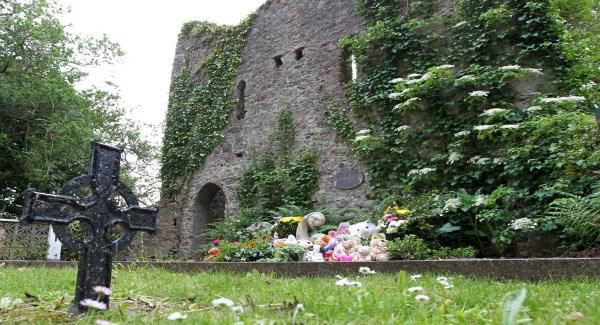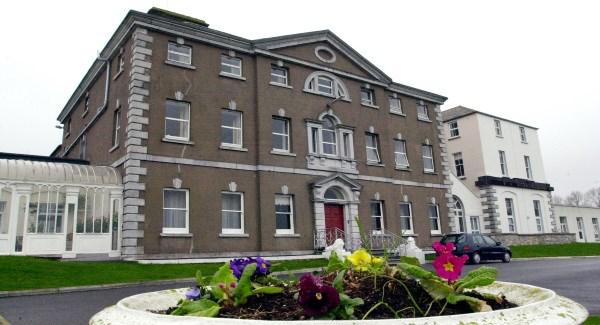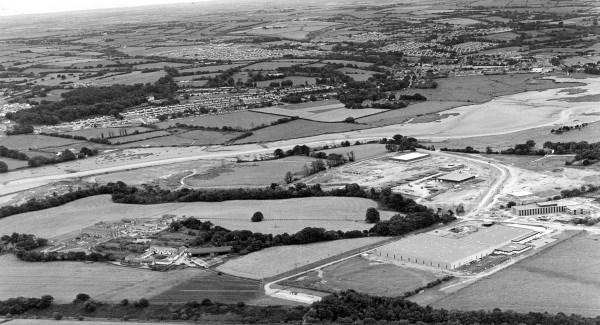|
New Bessborough revelations show wider range of products tested on children
By Conall ó Fátharta
Previously unseen details of a medical trial by Glaxo in 1974 at a Cork mother and baby home have generated a whole new series of questions for the nuns and the companies involved, writes Conall Ó Fátharta. For almost two decades, the public has been drip-fed revelations about medical testing by British pharmaceutical companies on children in care in Ireland. These tests involved the trialling of various vaccine combinations by predecessor companies of pharmaceutical giant GlaxoSmithKline (GSK) — Glaxo Laboratories and Burroughs Wellcome. These revelations generated more questions than answers — answers it is hoped the Mother and Baby Homes Commission can provide. However, it has now emerged thashoot Glaxo Laboratories was also trialling other products on children here — namely lactose and baby formulas. This occurred in 1974 in the Bessborough Mother and Baby Home in Cork and had never been made public. Once again, the revelation has generated lots of questions but few answers. A trial sheet obtained by the Irish Examiner reveals that Glaxo Laboratories carried out a “clinical acceptability and safety trial” of “Golden Ostermilk and Lactose”, while a separate trial sheet reveals a trial of “overseas milk powders (by 0111)”. The “clinician responsible” for the tests was Eithne Conlon — a local Cork GP who worked with the institution for many years. The trial sheets recorded a range of reactions to the products. These included vomiting (slight, moderate, severe, or none), excessive regurgitation, wind (slight, moderate, severe, or none), stools (locae, normal, or constipated) and stool colour (yellow, grass green, olive green, yellow green, no stools, meconium, changing). Other “abnormal conditions” were also noted. These included excessive crying, irritability, napkin rash, thrush, and others. The latter trial sheet was contained in the records of Breda Bonass, who had sought information on her medical history from Tusla under Freedom of Information. The former only came to light when Ms Bonass sought further information from Tusla. However, this only confused matters further as the trial sheet for “Golden Ostermilk and Lactose” was found in the antenatal records of other women — and all contain identical details including patient numbers — something which the FOI officer told Ms Bonass was “perplexing”. “In the majority of cases where this record was present the record was glued to another copy of the same record [front to front] and details about the respective baby’s feeding schedules, types of formula given, reactions to feeds, etc, were hand written on this paper,” said the FOI officer. “When I pried the two sheets apart I noticed that these trial sheets all contained the exact same patient and trial numbers and identifying details as the trial sheet located in your file.” Ms Bonass went to the religious order which ran Bessborough — the Sisters of the Sacred Hearts of Jesus and Mary — and GSK looking answers. The nuns responded via their solicitors, telling her they no longer held the records nor had any access to them and that she should go to Tusla. GSK’s UK data protection section informed her that the data had been “destroyed” as the “retention period has already expired some years ago”. The Irish Examiner contacted GSK in an effort to get answers as to why this trial was carried out in Ireland, how many children it involved and if consent was sought. It responded by saying it was “unable to locate any records relating to a 1974 study” but that it had located records relating to a trial from 1967. “The assumption therefore would be that the 1974 study’s purpose was to compare current milk powder with a newer formulation. The records contain no names or information about the children involved,” said GSK in a statement. It had no documentation to explain why Ireland was chosen as a location, but that the 1967 trial was also carried out in the UK, Kenya, Argentina, Malaysia, “and probably more”. With regard to the consent of mothers, GSK said that, due to the fact that it had no records, it could not confirm who gave consent but that its assumption was that it would have been “those Sisters running the homes as the legal guardians”. Obtaining consent would been left to the doctor conducting the trial. The company said that, to the best of its knowledge, no financial remuneration would have been provided to the Order for allowing children in its care to be used for the trial. GSK said the identical sheets were probably blank forms or templates and that the information entered “appear to be codes, possibly relating to a spreadsheet collating all responses”. It also confirmed that this was the first time it was made aware of this study and that it had not been asked to disclose it in any official capacity, “as this is clearly outside of the current Commission’s [Into Mother and Baby Homes] vaccines inquiry”. That, of course, is technically correct. The Commission is only tasked with examining vaccine trials carried out by GSK legacy companies. This latest revelation confirms that it wasn’t just vaccines that were being tested on children in care here. The involvement of Burroughs Wellcome and Glaxo Laboratories in trials on children in Mother and Baby Homes and other institutions is worth repeating. It’s been a long tale which saw a previous State inquiry —the Commission to Inquire into Child Abuse (CICA) in 2000 — try and fail to fully investigate the matter. Before that inquiry was halted following a Supreme Court ruling in 2002, GSK had confirmed just three vaccine trials in the 1960s and 1970s involving more than 250 children. In 2011, in a response to an RTÉ investigation, it acknowledged a fourth trial but stated that this was the only other clinical trial sponsored by Wellcome using children in institutions in Ireland. However, in 2014, documents uncovered by Michael Dwyer of UCC’s School of History revealed a fifth trial of a measles vaccine on 34 children took place in 1965. It was carried out by Irene Hillary and Patrick Meenan of UCD’s microbiology department and AJ Beale of Glaxo Laboratories. The UCD academics (both now deceased) were also involved in the first two vaccine trials also. Earlier that year, Dr Dwyer also discovered evidence that Wellcome had carried out vaccine trials on more than 2,000 Irish children in 24 residential institutions between 1930 and 1935. Despite this, the Inter-Departmental Group on Mother and Baby Homes published in 2014 only referred to three vaccine trials. It also failed to mention a 1965 trial of a 5-in-1 vaccine carried out on Philip Delaney at Bessborough Mother and Baby Home in Cork. Questions around the involvement of British pharmaceutical companies in vaccine trials in Ireland have been popping up in the media for almost three decades now. They first hit the headlines in the 1990s, but it wasn’t until 1997 that then health minister Brian Lenihan gave an undertaking that the matter would be examined. This resulted in the Kiely Report in 2000, by Jim Kiely, chief medical officer of the Department of Health, which confirmed three trials had been conducted on behalf of the pharmaceutical company the Wellcome Foundation. The i nstitutions involved were Wellcome Laboratories in Britain, the Department of Medical Microbiology in UCD, and the Eastern Health Board. The first trial took place between December 1960 and November 1961 in four Mother and Baby Homes — St Patrick’s on the Navan Road in Dublin (14 children), Bessborough in Cork (25 children), Castlepollard in Westmeath (six children), and Dunboyne (nine children). Four children from Stamullen baby home in Meath were also used for this trial. The purpose of the trial was to look at the response the children would have to a 4-in-1 vaccine — diphtheria, whooping cough, tetanus, and polio. The second trial involved 69 children from St Anne’s Industrial School in Booterstown in Dublin being administered an intranasal rubella vaccine. A further 53 children from the wider community in Kilcullen in Westmeath were also used in this trial. The first two trials were carried out by Prof Hillary and Prof Meenan from the department of Microbiology in UCD, as well as other doctors. The third trial involved 53 children in a number of residential institutions in Dublin including St Patrick’s Home, Madonna House, Bird’s Nest, and Boheenaburna. A total of 65 children living at home in Dublin also received the vaccine. The aim of the third trial was to compare commercially available batches of the 3-in-1 vaccine — Trivax and Trivax D — with that of equivalent vaccines prepared for the trial. There is no published paper or report of this trial, but the Eastern Health Board was aware it was being conducted. Dr Kiely’s report in 2000 concluded that, given the conditions which the vaccines sought to counter, the decision to conduct the trials was “acceptable and reasonable”. However, Dr Kiely said there was a lack of documentation available to clarify whether consent was either obtained or sought from the parents of the children or the managers of the institutions. However, an entry in the 1962 British Medical Journal concerning the first trial seems to confirm that parental consent was not sought. “We are indebted to the medical officers in charge of the children’s homes for permission to carry out this investigation on infants under their care,” it wrote. Responding to the Kiely Report in 2000, Prof Hillary said it was her “invariable practice at the time to obtain consent of the competent authority”, be it the mother, the manager, or the medical officer. However, no record of written consent has been acknowledged. The religious orders who ran the homes involved in the trials have also denied that they authorised any clinical trials. Of the victims of the vaccine trials who have located their natural mothers, all mothers have said they were not asked for their permission. In 2000, then minister for children Micheál Martin admitted the Kiely report was “incomplete” and raised “as many questions as it answered”. However, despite this, Mr Martin reassured the Dáil that the trials appeared to have had no medically negative consequences for any of the children involved. In an effort to deal with the matter, the Government decided to extend the terms of reference of CICA. This was done despite objections that the trials could not adequately be dealt with by an inquiry looking primarily into physical and sexual abuse. The ‘Vaccines Module’ of CICA began investigating in early 2002. It obtained documentation from GSK — the successor of Wellcome — and identified the names and addresses of some of those involved in the trials. It also sought records from a range of religious orders who were caring for the children used in the trials. In November of last year, the Irish Examiner revealed that the files of vaccine trial victims from Bessborough involved in the 1960/61 4-in-1 vaccine were altered just weeks after the CICA sought discovery of records from the Sisters of the Sacred Hearts of Jesus and Mary. The document listing the changes opens with: “8.8.02 Checked the 20 files.” This is immediately followed by: “9.8.02 Made the changes.” The changes made to files Nos 5, 8, 11, 12, and 15-20 are then detailed. The changes include:
In a series of statements, the order said it wished to “categorically state that no documents were altered”. “In your recent correspondence, you are suggesting that something illegal or inappropriate had occurred in regard to the documents to which you refer. This is entirely untrue; and we will continue to deal directly with the official commission on all such matters,” said a statement. This document listing the changes was discovered in the Bessborough archive handed over to the HSE by the nuns in 2011. It wasn’t discovered until 2016 — some 13 years after CICA’s investigation into the vaccine trials was suspended. This occurred after the probe was hit with a Supreme Court ruling which upheld Prof Meenan’s challenge against a High Court order directing him to give evidence before the inquiry. The court also criticised the decision to ask the commission to examine the vaccine trials in the first place, stating they had “only the most tenuous connection, if any, with the appalling social evil of the sexual and physical abuse of children in institutions, which was the specific area into which the commission was established to inquire”. Mr Justice Hardiman stated that Prof Meenan’s involvement in vaccine trials related only to one trial in 1960/61 and that the issue of the “reputational damage” associated with being involved with a commission primarily looking at sexual abuse had to be considered. Following this, Prof Hillary challenged the Government’s order directing an investigation into the vaccine trials and when the the Government declined to appeal this decision, the work of the Vaccines Module ceased in November 2003. However, at the time, many people believed there were far more than three trials carried out by Wellcome here. The Third Interim Report from CICA in December 2003 confirmed as much when it stated that the documentation it received from GSK “disclosed a considerable amount of information in relation to other vaccine trials conducted in the State”. When RTÉ’s Prime Time asked the pharmaceutical giant about this statement in 2011, it confirmed a fourth trial had taken place in 1965. This trial involved giving differing doses of the measles vaccine to 12 babies aged between nine and 19 months in the Sean Ross Abbey mother-and-baby home in Tipperary. GSK stated that this fourth trial was the only other clinical trial sponsored by Burroughs Wellcome using children in institutions in Ireland. Then, in 2014, the Irish Examiner revealed a fifth trial also occurred during this period. An article in The Lancet medical journal in August 1965, discovered by Dr Dwyer confirms that Glaxo Laboratories Ltd carried out another measles vaccine trial on 34 children aged between eight months and just over two years. The trial was carried out by Prof Hillary and Prof Meenan and AJ Beale of Glaxo Laboratories. It is also the first trial which confirms Glaxo Laboratories involvement in a vaccine trial. The report does not mention an institution. However, it makes reference to the fact that the reaction to the vaccine were monitored by “the adults looking after the children”. It also says examinations were done on the children from day six to 14 at the same time — 6pm — indicating the children were in a group setting. However, in response, GSK disagreed that these references amounted to evidence that the trial was carried out on children in care. The pharmaceutical giant pointed out that, in other papers by the same investigator, it was stated explicitly that the study was carried out on children in care. GSK said if it had any evidence that this trial was carried out on children in care, it would have handed it over to the CICA at the time. So, three years on, we now know that it wasn’t just vaccines that were being tested on children in Ireland’s Mother and Baby Homes. Now, we know that clinical acceptability and safety trials of lactose, Golden Ostermilk and “overseas baby powders” were being trialled in at least one Mother and Baby Home. Can and will the commission examine this latest development? Why was a British company testing such products in Ireland? Were religious orders benefiting financially by allowing children in their care to be involved in such trials? Was the consent of mothers obtained, or was it even sought? The Mother and Baby Homes commission did not respond to a request for comment.
|
.
Any original material on these pages is copyright © BishopAccountability.org 2004. Reproduce freely with attribution.



